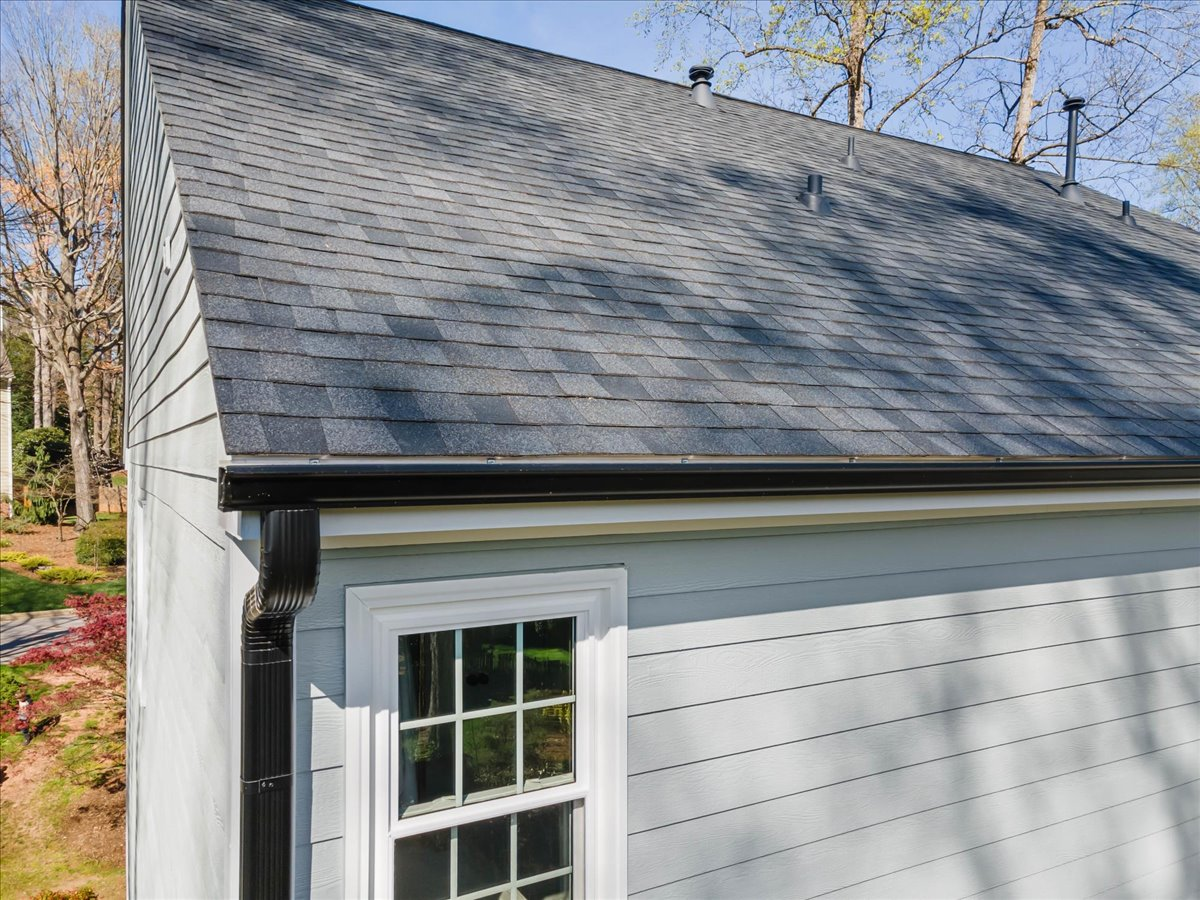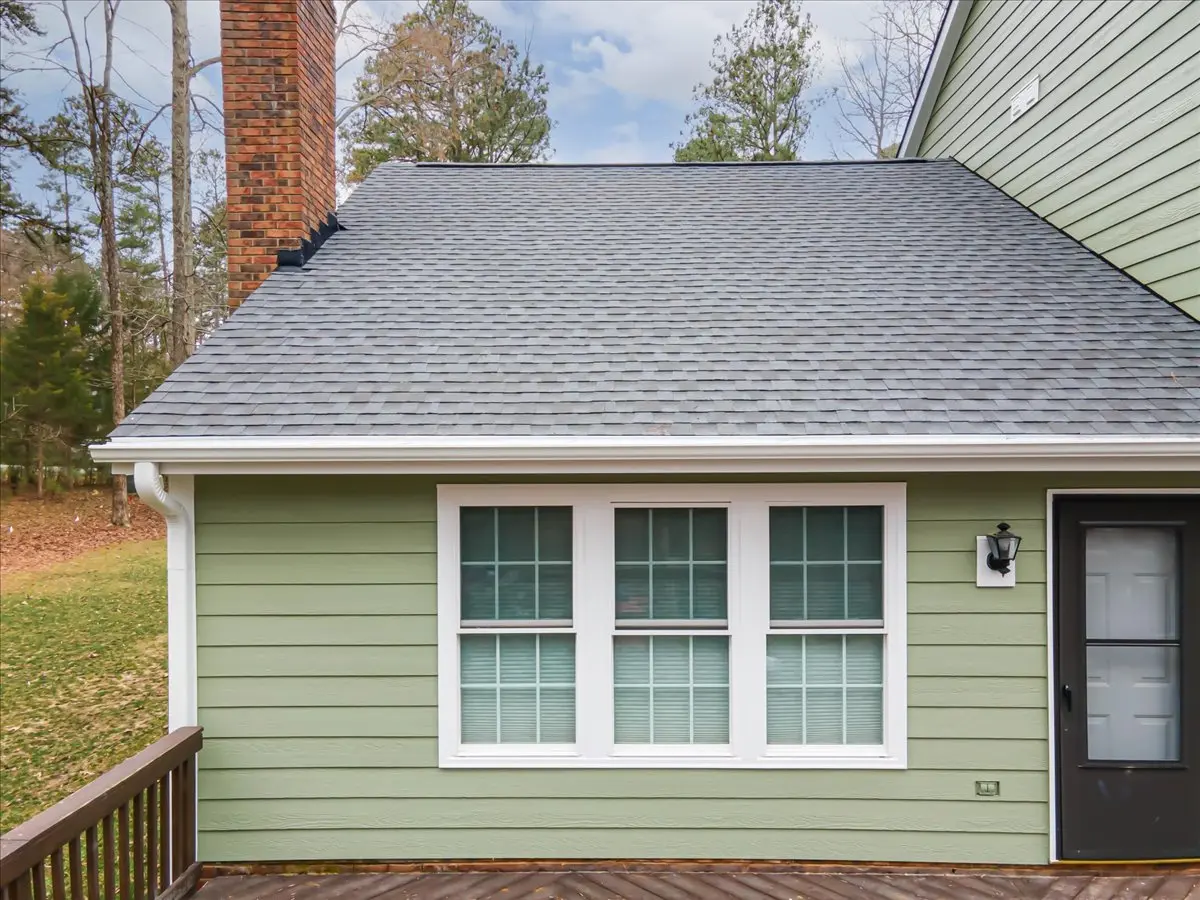For many Raleigh homeowners, painting siding is an affordable and transformative way to boost curb appeal. This guide will walk you through everything you need to know about painting siding–from choosing the right paint and prepping the surface to understanding how long results last in North Carolina’s climate. While painting offers benefits like significant cost savings and endless color customization, it isn’t always the right solution. We’ll help you understand the key differences between painting siding vs replacing it so you can make the best long-term decision for your home and your budget.
Preparing Your Siding for Painting
When painting siding, a successful project starts long before the first coat of paint is applied. Preparation varies depending on the material your siding is made from, understanding these differences is essential to achieving a finish that lasts. Wood, fiber cement, and many types of older vinyl siding can be painted effectively, while other materials–such as certain metals or factory-finished vinyl products–may not require paint at all. Wood siding, in particular, relies on paint as a protective barrier against rain, sun exposure, and moisture intrusion. If you’re considering refreshing your home’s exterior, proper preparation ensures the paint bonds well and protects your home for years to come.
Surface Cleaning and Maintenance
Before painting siding, every surface must be thoroughly cleaned to remove dirt, mildew, oxidation, chalky residue, and airborne contaminants. The specific cleaning approach depends on your siding type: wood often requires gentle washing and mold treatment, while vinyl may need a stronger cleaning solution to clear surface buildup. Fiber cement siding typically needs little more than a careful rinse. Proper cleaning ensures the new paint adheres correctly, reduces premature peeling, and extends the lifespan of your project.
Repair and Inspection
Whether you’re weighing the benefits of replacing vs painting your siding, or just preparing for a fresh coat of paint, it’s smart to start with a thorough inspection to make sure the existing siding is structurally sound. Wood siding should be checked for soft spots, rot, gaps, and pest damage, while fiber cement may show hairline cracks that need sealing. Vinyl siding should be evaluated for warping or loose panels that could affect the finished look or lead to bigger issues down the road. Completing repairs ahead of time helps protect your home’s structure, creates a uniform painting surface, and ultimately determines whether painting siding is still a good option–or if replacement is a better long-term investment.
Techniques and Tools for Painting Siding
Painting siding is a big project that requires a thoughtful approach, specialized tools, and proper technique to achieve the best results. With the right combination of primers, coatings, and application methods, homeowners can achieve a long-lasting, polished finish that revitalizes their home’s exterior.
Paint Application Techniques
Different siding materials respond best to different paint application methods. Here’s a quick breakdown of best practices:
- Wood Siding: Use high-quality brushes and rollers to help paint penetrate the grain and ensure full coverage. A bonding primer is essential.
- Fiber Cement: Both spraying and rolling work well. Most manufacturers recommend 100% acrylic exterior paint for durability.
- Vinyl Siding: Sprayers usually achieve the smoothest finish. Paint must be formulated for vinyl expansion and contraction.
- Metal Siding: Use a direct-to-metal primer followed by a corrosion-resistant exterior coating. Sprayers offer the most uniform look.
No matter the material, using the right tools and techniques ensures a uniform result that lasts.
Essential Painting Tools
Painting siding requires more than just brushes and rollers. Homeowners or contractors should have paint sprayers, masking plastic, drop cloths, painter’s tape, extension ladders, caulk guns, patching compounds, and protective materials for windows, landscaping, and walkways. These tools help ensure a clean, efficient, and professional-quality finish when painting siding.
How Much Does it Cost to Paint Your Siding
One of the biggest advantages of painting siding is its affordability when compared to replacement. On average, painting costs roughly 30–40% of what it would cost to replace siding entirely, making it an appealing option for homeowners seeking a refreshed look without the higher upfront investment. However, while painting siding is more budget-friendly, it doesn’t come without its challenges and may require repeated maintenance over the years. Homeowners comparing painting siding vs replacing should weigh the lower upfront cost of painting against the longer lifespan and reduced maintenance associated with full siding replacement.
When to Paint vs. Replace Siding
This is one of the most important decisions homeowners face: is your siding in good enough condition to paint, or is replacement the smarter long-term choice? North Carolina’s climate—with hot summers, high humidity, and seasonal storms—plays a major role in determining which route offers better protection and value for your home. At Raleigh Windows & Siding, we offer both painting and replacement options, and our expert team would be happy to help you determine which is the best fit for your home.
When Painting Is the Better Option
Painting siding is often the right choice when the material is structurally sound and shows only minor cosmetic wear, such as fading, light chalking, or small surface cracks. Wood, fiber cement, and certain types of vinyl respond well to painting, offering homeowners an opportunity to dramatically change their home’s appearance without full replacement. Wood in particular, relies on regular painting or staining to prevent moisture damage, rot, and UV deterioration—making painting an essential maintenance step rather than a cosmetic preference. If you’re leaning toward painting siding vs replacing, painting offers a cost-effective, attractive solution as long as the siding is in good condition.
When Replacement Is the Smarter Choice
If your siding has significant structural issues—such as rot, widespread cracking, warping, pest damage, mold infiltration, or moisture problems—replacement is usually the more effective long-term choice. As a general rule, if more than 25–30% of the siding is compromised, it’s often more cost-effective to replace rather than repair and repaint. Siding replacement also offers improved insulation, superior weather resistance, and long-term peace of mind—key considerations when comparing painting vs replacing siding for your home’s future.
Maintenance and Longevity Comparisons
Understanding long-term maintenance and durability is essential when deciding whether to painting or replacing siding will offer better value for your home.
Maintenance Requirements
Painted siding requires routine upkeep to maintain its appearance and protection. Homeowners should plan for annual cleaning, mildew prevention, touch-ups where needed, and regular caulking around joints and trim. Wood siding may require additional maintenance based on age and exposure. These ongoing tasks help extend the life of your paint job and reduce the likelihood of early deterioration.
Lifespan Expectations
A professional paint job on siding typically lasts 5–10 years, depending on the material and local climate conditions. By contrast, new siding—particularly fiber cement, high-quality vinyl, or engineered products—can last 25 years or more with minimal maintenance. If long-term durability and reduced upkeep are top priorities, this difference may significantly influence your decision when evaluating painting siding vs replacing.
Additional Considerations: Warranties and Financing
Before moving forward with either painting or replacing your siding, it’s important to understand how each option affects warranties and how financing can help with project costs.
Understanding Warranties
Many siding manufacturers provide warranties that may be voided if the surface is repainted, especially for vinyl or engineered materials with factory-applied finishes. On the other hand, new siding installations typically come with extensive manufacturer and workmanship warranties, offering long-term protection and added value. For homeowners debating painting siding vs replacing, warranty coverage can be a determining factor.
Financing Options
Home improvement financing programs can help homeowners spread project costs over manageable monthly payments. These financing options make both painting and replacing siding accessible, allowing you to choose the best solution for your home without compromising quality or budget.
Making the Right Choice for Your North Carolina Home
Whether you choose the quick, cost-effective transformation of painting siding or the long-term durability and protection of full replacement, the right choice ultimately depends on your home’s current condition and your long-term priorities. Understanding how factors such as climate, maintenance requirements, warranty implications, and overall lifespan influence your investment can help you confidently navigate the decision-making process. With a clear picture of painting siding vs replacing, you can select the option that delivers the best balance of value, beauty, and performance for your home.If you’re still unsure which path is right for you, Raleigh Windows & Siding is here to help. Our team provides expert guidance and high-quality siding installation and exterior painting services tailored to North Carolina homes. Explore your options and schedule a consultation today.



